 On today's BradCast: We make short work (for now) of several breaking news stories from over the weekend and into today. Then its straight on to our main story today, which you will hear nowhere else in the media. [Audio link to today's full show is posted below summary.]
On today's BradCast: We make short work (for now) of several breaking news stories from over the weekend and into today. Then its straight on to our main story today, which you will hear nowhere else in the media. [Audio link to today's full show is posted below summary.]
In January, we broke the news here on The BRAD BLOG and The BradCast that Los Angeles County's brand-new, unverifiable, $300 million, 10-years-in-development touchscreen polling place voting system had failed to meet more than 40 different California Voting System Standards, according to independent certification testers hired by CA's Secretary of State Alex Padilla. Despite critical security issues that alarmed voting system and cybersecurity experts, the machines were nonetheless "conditionally certified" by Padilla just prior to the March 3rd Super Tuesday primary in the state. The new machines (known as Ballot Marking Devices or BMDs) and the electronic pollbooks that are required to work with them, both failed spectacularly. Voters were disenfranchised by the "Voting Solutions for All People" or VSAP system, as many across the nation's most populous voting jurisdiction were either turned away or forced to wait for hours in line to vote.
It was well after midnight before all of those still in line finally cast their votes on Super Tuesday. It was, of course, impossible to know if any of those votes were tallied as per any voter's intent, because BMD systems print out a computer-marked paper ballot which may or may not reflect the actual intent of any voter. It's impossible to know if results are accurate in any election that uses BMDs for the majority of voters. Recent studies [PDF] find that more than 90% of voters do not notice when a BMD has misprinted one or more of their votes on the paper printout.
After the March 3rd disaster in L.A. (which we had warned about long in advance, to little interest from media or public officials, even from the L.A. County Supervisors, much less Sec. Padilla) the system's brainchild, Registrar-Recorder/County Clerk Dean Logan, was allowed a mulligan. He promised to fix what didn't work before the November election and told us all to simply trust him. Next time would be better. Many in the media then lost whatever interest they had as it was just weeks after Super Tuesday that COVID pandemic struck hard.
Well, now Padilla has recently posted the new certification testing results from Logan's mulligan, VSAP 2.1. The results do not inspire confidence, as many of the same problems with the system originally --- such as paper jams and misprinted QR Codes {PDF] --- still exist, according to testers. Now Padilla must decide in the next two weeks whether or not to certify them again. In truth, he has little choice as Early Voting is now just weeks away. While the state's decision to send every active voter a Vote-by-Mail ballot may help to ease many of the potential log jams at the county's new Voting Centers, ballots cast on the new systems --- as opposed to verifiable hand-marked paper absentee ballots --- are still vulnerable to manipulation and can never been known to reflect voter intent after the polls close.
However, there are some things that Padilla could require to be done to mitigate some of the worst dangers of the system if it is to be used for this year's critical November election. Several dozen election integrity and activist groups, along with a number of esteemed cybersecurity and voting systems experts, recently signed on to an excellent public letter led by the California Clean Money Campaign, demanding Padilla implement a number of the mitigations before certifying the updated voting systems.
We're joined today by LULU FRIESDAT, co-founder of SmartElections.us and ROBIN GIBSON, longtime Los Angeles Election Integrity advocate, to discuss those potential mitigations and the one-and-only public comments hearing held today online before Padilla's pending decision to certify. They report that Padilla did not bother to attend, though Logan, apparently, came by near the end of the session to claim that everything is now working fine. "Our registrar got on the call and dismissed two hours of worried voters, and said he had tests that said it was fine," Gibson explained. "It was like 'I win, nah, nah, nah.'"
As Friesdat and Gibson explain, the citizen advocates and experts are asking in their letter for the ballot boxes attached to each touchscreen tablet system to be removed, so that the computer-printed ballots don't have to pass back through the same printer heads after they've been (theoretically) verified by each voter. Experts warn [PDF] that sending the ballot back through the same printer path after verification is a major security risk, allowing the system to change voters votes, without their knowledge, after they have supposedly already approved their printed ballot. Instead, the group is urging that the attached ballot boxes be removed, and that ballots be deposited manually by voters into a separate ballot box at the polling place, for tabulation later.
The group is also asking Padilla to do away with the unverifiable QR Codes that are printed on each ballot. It is that code --- which can't be verified as accurate by any voter --- that is actually read by the optical-scan computer tabulators to tallly each ballot, rather than the human-readable text print out that voters may or may not have verified! "It is not secure to have the vote encoded in a QR code," Friesdat joins cybsersecurity experts in warning.
Moreover, the groups are calling for real, hand-marked paper ballots to be made available to any and all voters at Voting Centers for voters smart enough to want to cast a verifiable vote. "This is basic," Friesdat insists. "Hand-marked paper ballots are the gold standard that security experts recommend. It's not hard to provide them, and voters should be encouraged to use hand-marked paper ballots if they're able to mark by hand."
They also uge Padilla and Logan to finally release the source code to this supposedly County-owned and developed system. The money appropriated by tax-payers was done on the basis, advanced by both Padilla and Logan, that it would be a fully "open source" system, 100% publicly owned. All of that is also important because elections officials in other states and counties across the country have expressed interest in adopting this exact system if it ever actually works in L.A.
Friesdat and Gibson detail many of their own concerns, as well as others who offered public comment today before we open up the phone lines to listener questions about this terrible new system, just 64 days before Election Day and mere weeks before early voting is set to begin in Los Angeles County...
(Snail mail support to "Brad Friedman, 7095 Hollywood Blvd., #594 Los Angeles, CA 90028" always welcome too!)
|


 Sunday 'New Guy, Old Guy' Toons
Sunday 'New Guy, Old Guy' Toons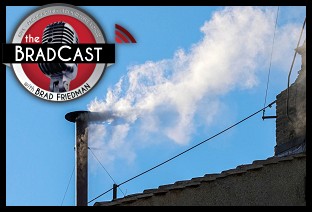 Blowing Smoke.
Blowing Smoke.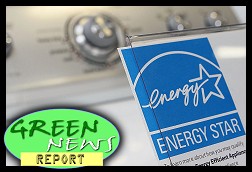 'Green News Report' 5/6/25
'Green News Report' 5/6/25
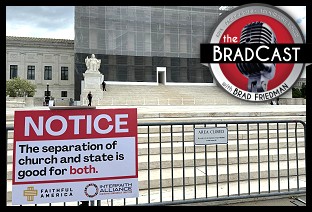 SCOTUS Weighs 'Disastrous' Public Funding of Religious Schools: 'BradCast' 5/7/25
SCOTUS Weighs 'Disastrous' Public Funding of Religious Schools: 'BradCast' 5/7/25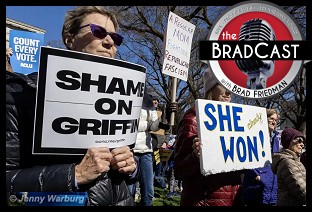 Trump Judge Blocks NC GOP Theft of 2024 Supreme Court Seat: 'BradCast' 5/6/25
Trump Judge Blocks NC GOP Theft of 2024 Supreme Court Seat: 'BradCast' 5/6/25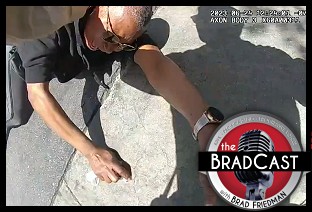 Prosecutors Quit After U.S Attny Strikes Deal With Felon Cop: 'BradCast' 5/5/25
Prosecutors Quit After U.S Attny Strikes Deal With Felon Cop: 'BradCast' 5/5/25 Sunday 'Good Buy, Dolly!' Toons
Sunday 'Good Buy, Dolly!' Toons Trump Losing Streak Continues into SECOND Hundred Days: 'BradCast' 5/1/25
Trump Losing Streak Continues into SECOND Hundred Days: 'BradCast' 5/1/25 'Green News Report' 5/1/25
'Green News Report' 5/1/25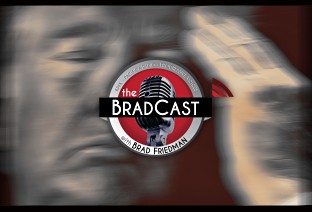 100 Daze (w/ Digby and Driftglass): 'BradCast' 4/30/25
100 Daze (w/ Digby and Driftglass): 'BradCast' 4/30/25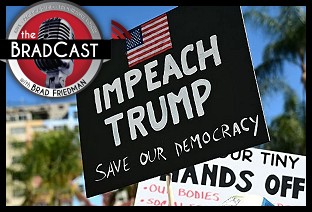 Campaign to 'Impeach Trump Again' Gains Fresh Momentum: 'BradCast' 4/29/25
Campaign to 'Impeach Trump Again' Gains Fresh Momentum: 'BradCast' 4/29/25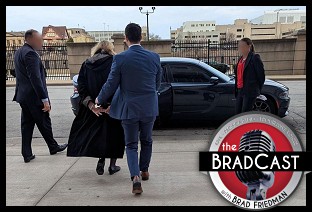 And Then They Came for the Judges...: 'BradCast' 4/28/25
And Then They Came for the Judges...: 'BradCast' 4/28/25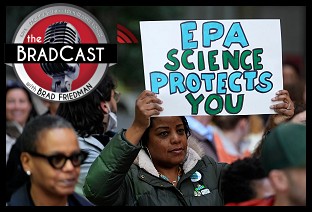 Trump EPA Guts Enviro Justice Office: 'BradCast' 4/24/25
Trump EPA Guts Enviro Justice Office: 'BradCast' 4/24/25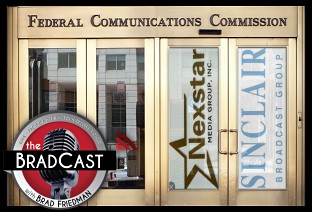 Largest U.S. Broad-caster Hoaxes Viewers to Help Gut FCC Rules: 'BradCast' 4/23/25
Largest U.S. Broad-caster Hoaxes Viewers to Help Gut FCC Rules: 'BradCast' 4/23/25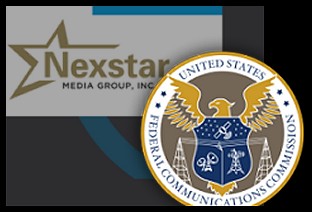 FCC on Precipice of Ending All Limits on Corp. Control of Local TV Stations
FCC on Precipice of Ending All Limits on Corp. Control of Local TV Stations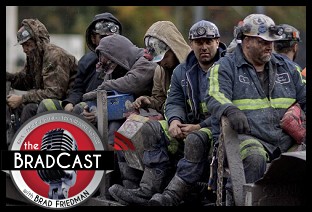 GOP Earth Day 2025 Hypocrisies and Dilemmas: 'BradCast' 4/22/25
GOP Earth Day 2025 Hypocrisies and Dilemmas: 'BradCast' 4/22/25 Pope Francis Dies, Trump Still Alive and Criming: 'BradCast' 4/21/25
Pope Francis Dies, Trump Still Alive and Criming: 'BradCast' 4/21/25
 VA GOP VOTER REG FRAUDSTER OFF HOOK
VA GOP VOTER REG FRAUDSTER OFF HOOK Criminal GOP Voter Registration Fraud Probe Expanding in VA
Criminal GOP Voter Registration Fraud Probe Expanding in VA DOJ PROBE SOUGHT AFTER VA ARREST
DOJ PROBE SOUGHT AFTER VA ARREST Arrest in VA: GOP Voter Reg Scandal Widens
Arrest in VA: GOP Voter Reg Scandal Widens ALL TOGETHER: ROVE, SPROUL, KOCHS, RNC
ALL TOGETHER: ROVE, SPROUL, KOCHS, RNC LATimes: RNC's 'Fired' Sproul Working for Repubs in 'as Many as 30 States'
LATimes: RNC's 'Fired' Sproul Working for Repubs in 'as Many as 30 States' 'Fired' Sproul Group 'Cloned', Still Working for Republicans in At Least 10 States
'Fired' Sproul Group 'Cloned', Still Working for Republicans in At Least 10 States FINALLY: FOX ON GOP REG FRAUD SCANDAL
FINALLY: FOX ON GOP REG FRAUD SCANDAL COLORADO FOLLOWS FLORIDA WITH GOP CRIMINAL INVESTIGATION
COLORADO FOLLOWS FLORIDA WITH GOP CRIMINAL INVESTIGATION CRIMINAL PROBE LAUNCHED INTO GOP VOTER REGISTRATION FRAUD SCANDAL IN FL
CRIMINAL PROBE LAUNCHED INTO GOP VOTER REGISTRATION FRAUD SCANDAL IN FL Brad Breaks PA Photo ID & GOP Registration Fraud Scandal News on Hartmann TV
Brad Breaks PA Photo ID & GOP Registration Fraud Scandal News on Hartmann TV  CAUGHT ON TAPE: COORDINATED NATIONWIDE GOP VOTER REG SCAM
CAUGHT ON TAPE: COORDINATED NATIONWIDE GOP VOTER REG SCAM CRIMINAL ELECTION FRAUD COMPLAINT FILED AGAINST GOP 'FRAUD' FIRM
CRIMINAL ELECTION FRAUD COMPLAINT FILED AGAINST GOP 'FRAUD' FIRM RICK SCOTT GETS ROLLED IN GOP REGISTRATION FRAUD SCANDAL
RICK SCOTT GETS ROLLED IN GOP REGISTRATION FRAUD SCANDAL VIDEO: Brad Breaks GOP Reg Fraud Scandal on Hartmann TV
VIDEO: Brad Breaks GOP Reg Fraud Scandal on Hartmann TV RNC FIRES NATIONAL VOTER REGISTRATION FIRM FOR FRAUD
RNC FIRES NATIONAL VOTER REGISTRATION FIRM FOR FRAUD EXCLUSIVE: Intvw w/ FL Official Who First Discovered GOP Reg Fraud
EXCLUSIVE: Intvw w/ FL Official Who First Discovered GOP Reg Fraud GOP REGISTRATION FRAUD FOUND IN FL
GOP REGISTRATION FRAUD FOUND IN FL




















 On today's
On today's  On Wednesday night at the Republican National Convention, the GOP's candidate for the vacant seat in North Carolina's 11th Congressional District offered some strange remarks. Today, on
On Wednesday night at the Republican National Convention, the GOP's candidate for the vacant seat in North Carolina's 11th Congressional District offered some strange remarks. Today, on  On today's
On today's  I'll be brief in today's
I'll be brief in today's 







 Everything is now happening all at once. So, we couldn't get through half of what we would have liked to have covered while still having enough time left to open phones on today's
Everything is now happening all at once. So, we couldn't get through half of what we would have liked to have covered while still having enough time left to open phones on today's 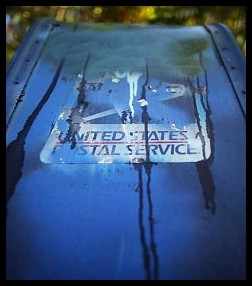 Even if several multi-state legal challenges result in a federal court order directing Postmaster General Louis DeJoy to repair the damage wrought by his allegedly "illegal" sabotage of the U.S. Postal Service's mail delivery capabilities, absent significant additional funds, it's unlikely DeJoy could fully comply with that order.
Even if several multi-state legal challenges result in a federal court order directing Postmaster General Louis DeJoy to repair the damage wrought by his allegedly "illegal" sabotage of the U.S. Postal Service's mail delivery capabilities, absent significant additional funds, it's unlikely DeJoy could fully comply with that order.
 On today's
On today's  Today's
Today's  On today's
On today's  Yes, on today's
Yes, on today's 













